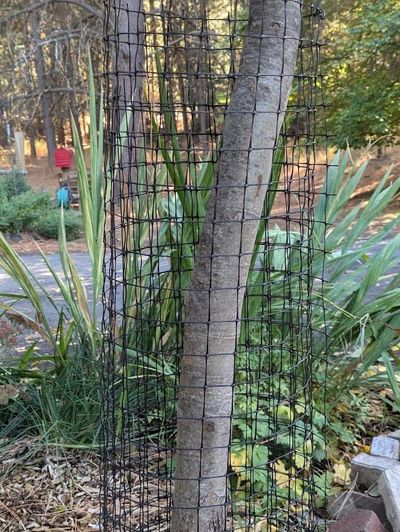Gardening: This fall’s gradual cooling leaves time for more gardening

By the time you are reading this, we will have had our first killing frost.
Unlike the last couple of years, it was a gentle frost with normal cool temperatures in the following days. The last couple of years have seen brutal temperature drops into the teens followed almost immediately with snow. The leaves froze on the trees, and it was impossible to rake up leaves and needles.
The long-range forecast predicts La Nina conditions this winter with colder and wetter weather. This will help restore our mountain snow pack and relieve the drought conditions we have been experiencing. It also means there’s still time to finish your fall garden projects.
This is garlic planting season. Plant cloves of seed garlic 2 to 3 inches deep and 3 inches apart in rich soil, then mulch the rows with 3 to 4 inches of straw, pine needle or shredded leaves to protect the cloves from thawing and refreezing. In March, gently pull the mulch aside to reveal the green shoots and fertilize with an all-purpose fertilizer. Leave the mulch on the bed to retain moisture and deter weeds.
Pelargonium geraniums that have brightened your deck pots can be overwintered in a cool basement space. Dig the plants and shake off most of the dirt. Place the roots in a paper bag in the coolest place you have in the basement.
Every few weeks, soak the roots in water for a couple of hours. In March, pot them up and put them in a sunny window or under lights. They will be ready to put back out in late May. Potted plants can be overwintered in a sunny window or under lights set for 12 hours a day. Water the plants when the top half inch of soil is dry. In March, cut the plants back by half and feed lightly with an all-purpose fertilizer.
If you have challenges with deer damaging bark, wrap the trunks of young trees with wire fencing or heavy deer fencing to cut down on damage when the deer rub their antlers on the trees. Wrap the base of trees with fine wire mesh to prevent voles, mice, rabbits and gophers from chewing on the bark. Voles and mice are particularly stealthy about tunneling under the snow to the trunk and you won’t see the damage until spring which might be too late.
In the house, houseplants are also going dormant for the winter as the days shorten. As they go dormant, they will need less water and no fertilizer. It can be a bit tricky to determine when to water, but a good rule of thumb is to poke your index finger into the soil to the first joint. If it’s dry, water enough to see water begin running into the saucer. Let succulents like jade plants dry out for two to three weeks in between waterings as they are prone to rot with overwatering. Houseplants won’t need fertilization until mid-March because they are dormant.